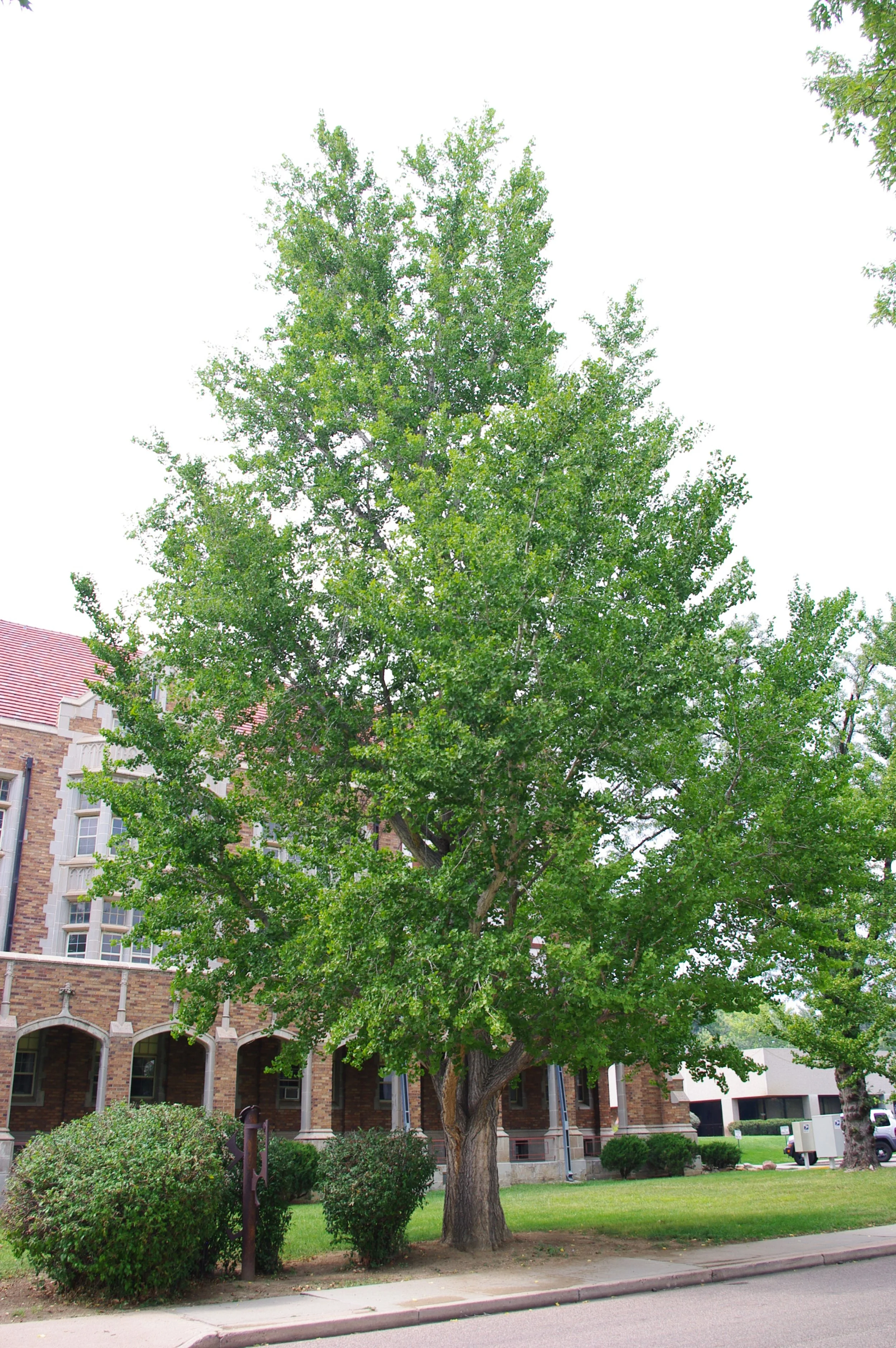ginkgo (Ginkgo biloba)
First place champion Ginkgo in Canon City at Holycross Abbey, planted in 1922 by Father Michael.
Species info:
Leaves: Simple, alternate or in clusters on short spur shoots; fan-shaped with parallel veins and a distinct notch or cleft (bilobed) at the center. Up to 3 inches wide with a 3-inch petiole. Light green in summer, turning bright golden-yellow in fall.
Leaflets: None (simple leaf).
Leaf Surface: Smooth and leathery; slightly ribbed texture with visible vein lines.
Bark: Light brown to gray-brown; deeply furrowed and highly ridged with age, giving a rugged, corky appearance.
Flowers: Inconspicuous; male flowers borne in catkin-like clusters, female flowers in pairs on stalks.
Fruit: ¾–1½ inch fleshy, tan-colored fruit on female trees; produces a strong, rancid odor when ripe. Only male cultivars should be planted to avoid this issue.
Botanical: Ginkgo biloba
Family: Ginkgoaceae
Mature Height: 50–65 feet (occasionally up to 75 feet)
Canopy Spread: 25–35 feet (occasionally wider)
Foliage Type: Deciduous
Tree Shape: Pyramidal and columnar when young, broadening with age to irregularly spreading form
Growth Rate: Moderate (12–18 inches per year once established)
Fruit: Female trees produce smelly fruit
Fall Color: Bright yellow
Water Use: Low to moderate; drought-tolerant once established
Hardiness: Zones 4–9
Soil Preference: Adaptable to most soil types, including poor, compacted, or alkaline soils; best in well-drained sites
Wildlife Value: Limited food value; occasional use by birds for shelter
Pests/Pathogens: Virtually pest-free; extremely resistant to air pollution, drought, heat, and ice damage
Planting Recommendations: Recommended for most sites along the Front Range; slow to establish
Information Sources:
Front Range Tree Recommendation List
Michael A. Dirr. Dirr’s Encyclopedia of Trees & Shrubs. Timber Press. 2011.


